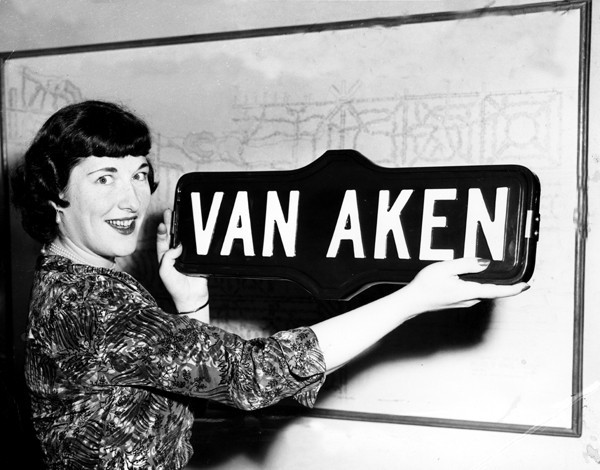
William J. Van Aken (1884-1950) served as Mayor of Shaker Heights from 1915 until his death in 1950, overseeing its transition from rural farmland to one of the nation's wealthiest and most well-regarded suburbs. The opening of a new city hall in 1930 symbolized a turning point in this transition, as the city moved out of a modest structure on the site of the old Shaker religious community's meeting house at the northeast corner of Shaker Boulevard and Lee Road, and into a grand brick building featuring an imposing semi-circular portico framed by six two-story high Corinthian columns. The building at 3400 Lee Road--designated a Shaker Heights Landmark on July 26, 1993--was designed by Charles Schneider (who also designed Shaker Heights's Plymouth Church, Fernway School, Ludlow School, and Lomond School) in Georgian Revival style. The Village of Shaker Heights officially became a city the next year, capping twenty years of tremendous growth.
While the Van Sweringen brothers may be the best known figures in Shaker's history, the "third Van" also deserves credit for the city's rise. William Van Aken grew up being friends with O.P. and M.J. Van Sweringen. All three worked as paperboys for the same Cleveland newspaper. Van Aken worked the "country" route, beginning near his mother's farmhouse at East 125th Street and Larchmere Boulevard. During the first decade of the 20th-century, both Van Aken and the Van Sweringens were working separately to develop farmland on Cleveland's east side. Speaking to a reporter, Van Aken remembered this as "a rugged job, but I loved it. Carving a city out of wilderness is the most satisfying of experiences."
Van Aken rekindled his friendship with the Van Sweringens during this time, using their help to win a seat on the Cleveland Heights Village Council. The three men then worked together to successfully have the old North Union Shaker lands (owned by the Van Sweringens) detached from Cleveland Heights, giving O.P. and M.J. firm control over their investment. Indeed, the first three councilmen for Shaker Township (incorporated in July 1911 after approval by Cleveland Heights) were Van Aken, O.P. Van Sweringen, and the Van Sweringens' attorney. The Van Sweringens could now feel confident that their vision of a highly-planned, "Garden City" suburb would take shape.
William Van Aken became mayor of Shaker in 1915 and soon after started his own real estate firm. During his tenure as Mayor, he oversaw the construction of the Rapid Transit line to Downtown in the 1920s, and helped the city through the potentially catastrophic bankruptcy of the Van Sweringen Company in 1936, all while Shaker's population and land values continued to rise. From 200 in 1911, Shaker grew to over 28,200 residents by 1950. Van Aken also created one of the nation's first municipal architectural review boards and stringently enforced the city's zoning regulations, actions which surely pleased the Van Sweringens, who viewed high design standards and careful planning as the best ways to maintain Shaker Heights's upper-class appeal, differentiating it from the crowded, smoky big city to its west.
It was therefore quite fortuitous that the three former paperboys renewed their friendship in adulthood: the Van Sweringens saw their investment blossom, Van Aken became an influential and respected community leader, and out of sparsely populated farmland grew a city that today continues to retain its original charm and beauty.
Audio
Images








